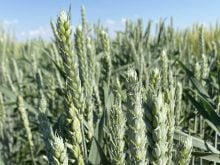Soybean prices have been tumbling lately and that shouldn’t be a surprise, says one market analyst.
“I don’t think anything surprising is going on,” said Ken Ball of Benson Quinn-GMS.
“When you take a market up that high, the comedown is going to be violent.”
The futures price of old-crop soybeans, reflected in the July contract, was $8.14 US per bushel on May 28 compared to $6.84 per bu. for the new crop November contract.
With only two or three months before the new crop comes in, prices between old and new soybeans will have to sharply adjust. The convergence of the prices may come in sudden, large jolts rather than in a steady progression.
Read Also

Grain farming’s hard times expected to continue
Rabobank says it will be two more years before North American grain farmers achieve break-even due to “monster” supplies and “sticky” crop input prices.
“The game might not be totally over for old-crop soybeans, but there’s no way you can take a crop to $10.50 and come down quietly,” said Ball.
“The transition from one year to the next can be abrupt.”
The world is still short of vegetable oil supplies, but demand has been cramped by fears over the Chinese market.
Strong Chinese demand for most of the past year supported prices.
But now Chinese soybean importers and processors are trying to minimize their soybean imports because they have large stocks of high-priced beans but a declining demand because of the avian flu.
Chinese importers recently rejected several shipments of Brazilian soybeans, further rattling the market.
Four times in May, soybean prices dropped the maximum allowable daily limit of 50 cents US per bushel, making many analysts believe prices will not again reach $10 per bu. for old-crop soybeans.
New-crop soybean prices have also been hammered recently, as heavy rains in major production regions have boosted the American crop’s prospects.
Ball said old-crop soybeans can still rise, but producers shouldn’t be surprised to see more drops in the weeks leading toward the soybean harvest.
The lower price now is a natural product of the good prices that producers enjoyed last winter.
The strong returns encouraged more soy acres this spring.
“When you get prices that high, that’s the way it’s going to be,” said Ball.















